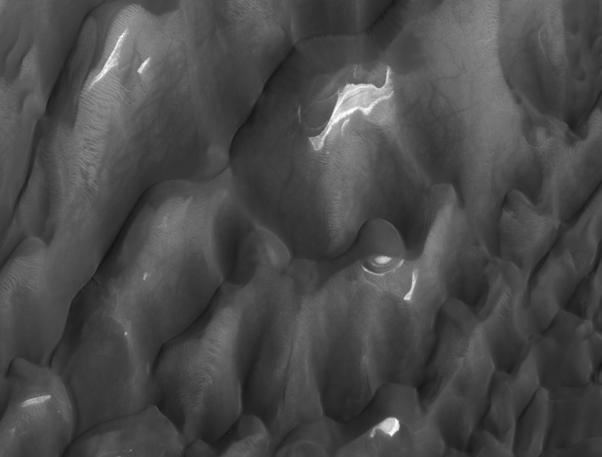Planet Mars | ||
 | ||
Eponym Bernard Lyot, French astronomer (1897–1952) | ||
Lyot is a large crater in the Vastitas Borealis region of Mars, located at 50.8° north latitude and 330.7° west longitude within the Ismenius Lacus quadrangle. It is 236 km in diameter and was named after Bernard Lyot, a French astronomer (1897–1952). The name was approved in 1973 by the International Astronomical Union (IAU) Working Group for Planetary System Nomenclature (WGPSN). Lyot stands out on the flat plains of Vastitas Borealis, which is generally flat and smooth with few large craters. Lyot is the deepest point in Mars's northern hemisphere.
Contents
Research published in June 2009 describes evidence for liquid water in Lyot in the past.
Former rivers
Images from Mars Reconnaissance Orbiter show valleys carved by rivers on the floor of Lyot Crater. Scientists are excited because the rivers seem to have formed more recently than others on Mars; water could have flowed in them only 1.25 million years ago. The source of the water is believed to have been ice from nearby glaciers. The river valleys are over 250 meters wide and tens of kilometers long.
Dust devil tracks
Many areas on Mars, including Lyot, experience the passage of giant dust devils. A thin coating of fine bright dust covers most of the Martian surface. When a dust devil goes by it blows away the coating and exposes the underlying dark surface. These dust devils have been seen from the ground and high overhead from orbit.
